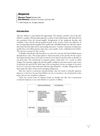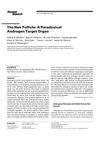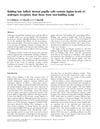Cultured Dermal Papilla Cells From Androgen-Dependent Human Hair Follicles Contain More Androgen Receptors Than Those From Non-Balding Areas Of Scalp
April 1992
in “
Journal of Endocrinology/Journal of endocrinology
”
TLDR Beard hair follicles have more androgen receptors than non-balding scalp hair follicles.
The study found that dermal papilla cells from androgen-sensitive hair follicles (such as beard, scrotum, and pubis) contained higher levels of androgen receptors compared to those from non-balding scalp follicles. This supported the hypothesis that androgens act on hair follicles via the dermal papilla. The research suggested that the altered phenotype of dermal papilla cells in culture depends on their body site of origin. These findings indicated that cultured human dermal papilla cells could be a useful model for studying androgen action mechanisms and might help explain why bald men can still grow beards.




